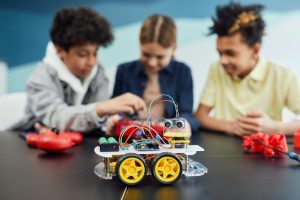Exploring Innovative Approaches to Student Assessment
In today’s educational landscape, the traditional methods of student assessment are no longer sufficient. With the constant evolution of technology and the growing demand for relevant and practical skills, educators are faced with the challenge of finding innovative approaches to assess student learning. In this article, we will explore the various ways in which schools and teachers are redefining student assessment to better meet the needs of 21st century learners.
Why traditional methods of assessment fall short
For decades, traditional methods such as written exams, quizzes, and standardized tests have been the go-to for measuring student achievement. While these methods have their merits, they often fail to provide a comprehensive understanding of a student’s skills and abilities. This is because they focus primarily on memorization and regurgitation of information, rather than critical thinking and real-world application.
Moreover, traditional assessments tend to favour students who have strong recall abilities, while neglecting those who may excel in other forms of learning, such as hands-on activities or verbal presentations. This one-size-fits-all approach to assessment does not take into consideration the unique strengths and weaknesses of individual students.
Rethinking student assessment
In recent years, there has been a shift towards more innovative and holistic approaches to student assessment. These methods not only allow for a more accurate evaluation of student learning, but also promote a deeper understanding of the material and encourage the development of vital skills that are essential for success in the 21st century.
Project-based learning
One of the most popular alternative methods of assessment is project-based learning. Instead of traditional exams, students are given real-world tasks or problems to solve, either individually or in groups. This allows for a more hands-on approach to learning, where students can apply their knowledge and skills to a practical situation. This type of assessment not only measures a student’s understanding of the subject matter, but also their ability to work collaboratively, think critically, and creatively problem-solve.
Portfolios
Another innovative approach to student assessment is through the use of portfolios. By compiling a collection of a student’s work throughout the year, including essays, projects, artwork, and other assignments, teachers can gain a better understanding of a student’s progress and growth over time. This method also encourages self-reflection and self-assessment, as students are required to select and reflect on their best work to include in their portfolio.
Performance-based assessments
Performance-based assessments involve having students demonstrate their knowledge and skills in a real-world setting. This could include simulations, role-play scenarios, or presentations. These types of assessments provide a more authentic way of measuring a student’s abilities, as they are required to apply their knowledge in a meaningful and relevant manner.
The role of technology in student assessment
In addition to these innovative approaches, technology has also played a significant role in transforming student assessment. Online platforms and tools such as virtual reality, gamification, and adaptive testing have made it easier for teachers to create interactive and personalized assessments that cater to the individual needs of their students.
Technology has also made it possible for students to receive immediate feedback on their performance, allowing for a more formative approach to assessment, where students can learn from their mistakes and improve their understanding in real-time.
Conclusion
The need for exploring innovative approaches to student assessment has become increasingly evident in today’s rapidly changing world. Traditional methods are no longer enough to accurately and comprehensively measure student learning. By adopting more holistic and technology-driven approaches, educators can not only better assess student achievement, but also foster the development of crucial skills that are necessary for success in the 21st century.










